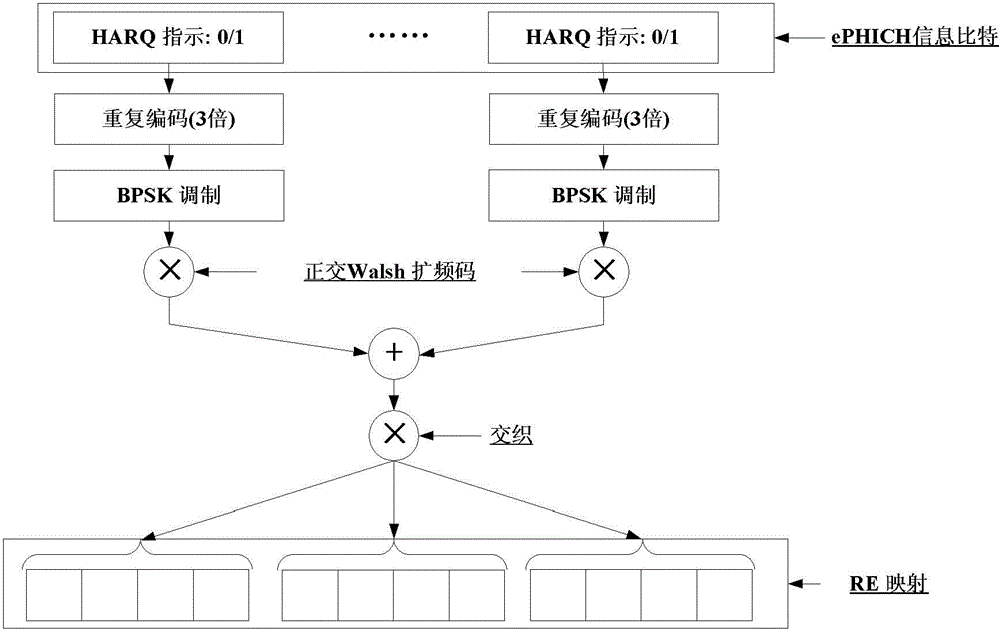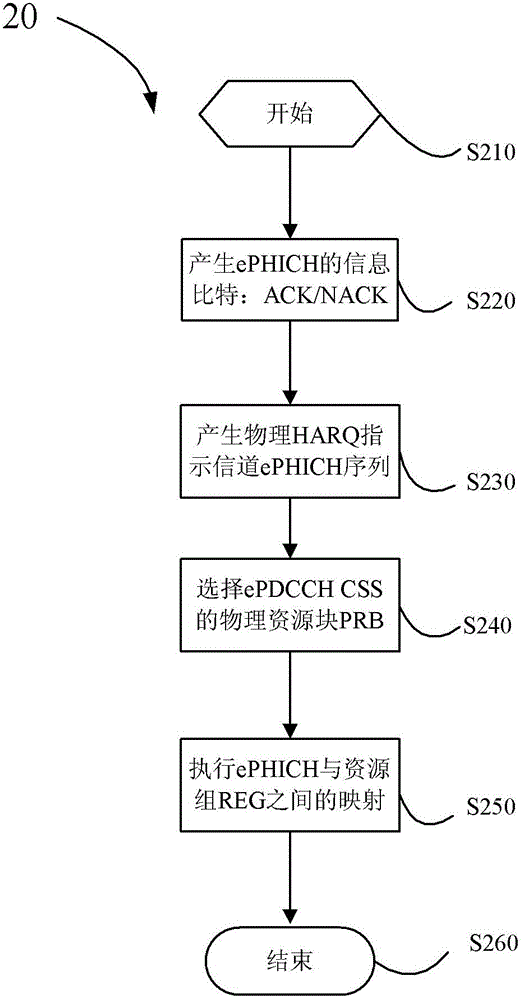Method for sending hybrid automatic repeat request indicator channel, and base station
A technology of retransmission indication, base station, applied in transmission system, digital transmission system, error prevention/detection using return channel, etc., can solve the problem of reducing the flexibility of transmission mode of physical downlink shared channel, etc. Effects of Frequency Resource Conflict
- Summary
- Abstract
- Description
- Claims
- Application Information
AI Technical Summary
Problems solved by technology
Method used
Image
Examples
example 1
[0049] Example 1: CSS of ePDCCH is composed of N PRBs, N={3, 6, 9}.
[0050] In this example, m=3 REGs for each ePHICH group are respectively multiplexed on different m=3 CSS-PRBs. First, the CSS-PRBs are sequentially numbered, denoted as In addition, 10 ePHICH-REGs are pre-defined in each CSS-PRB, numbered sequentially as Such as image 3 and Figure 4 shown.
example 1-1
[0051] Example 1-1: The ePHICH group corresponds to the triplet #{x, y, z} composed of the same ePHICH-REG sequence number, at this time x=y=z, and these 3 REGs come from 3 different CSS- PRB, as shown in Table 1 below.
example 1-2
[0052] Example 1-2: The ePHICH group corresponds to the triplet #{x, y, z} composed of different ePHICH-REG serial numbers. At this time, x≠y≠z, and these 3 REGs come from 3 different CSS- PRB, as shown in Table 1 below. For example, when N=9, the sequence number triplet #{x, y, z} for ePHICH-REG can be pre-defined as #{0, 3, 6}, #{1, 4, 7}, #{2, 5, 8}.
[0053]
[0054] Table 1. When CSS consists of N={3, 6, 9} PRBs, PRB selection of ePHICH group
PUM
 Login to View More
Login to View More Abstract
Description
Claims
Application Information
 Login to View More
Login to View More - R&D
- Intellectual Property
- Life Sciences
- Materials
- Tech Scout
- Unparalleled Data Quality
- Higher Quality Content
- 60% Fewer Hallucinations
Browse by: Latest US Patents, China's latest patents, Technical Efficacy Thesaurus, Application Domain, Technology Topic, Popular Technical Reports.
© 2025 PatSnap. All rights reserved.Legal|Privacy policy|Modern Slavery Act Transparency Statement|Sitemap|About US| Contact US: help@patsnap.com



